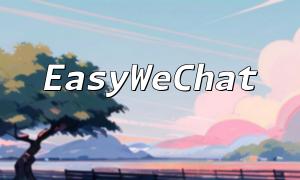With the growing popularity of social media, many websites and applications now offer social sharing features that allow users to easily share content on various platforms. In this article, we will show you how to implement a simple social sharing feature using PHP and provide code examples to help you quickly integrate sharing buttons into your website.
Before you start writing code, ensure that you have PHP installed and a working web server such as XAMPP, WAMP, or MAMP set up on your development environment.
To create share buttons, we need to generate specific share links for different social platforms. Each platform has its own format for share links, and here are examples for some of the popular ones:
Weibo:
https://service.weibo.com/share/share.php?url={url}&title={title}&pic={image}
Facebook:
https://www.facebook.com/sharer/sharer.php?u={url}
Twitter:
https://twitter.com/intent/tweet?url={url}&text={text}
WeChat:
https://mp.weixin.qq.com/mp/redirect?url={url}
In PHP, we can dynamically generate the share URLs based on the platform, URL, title, image, and text parameters. Here's an example function that generates the share link for a specific platform:
function generateShareLink($platform, $url, $title = '', $image = '', $text = '') {
switch ($platform) {
case 'weibo':
$link = 'https://service.weibo.com/share/share.php?url=' . urlencode($url) . '&title=' . urlencode($title) . '&pic=' . urlencode($image);
break;
case 'facebook':
$link = 'https://www.facebook.com/sharer/sharer.php?u=' . urlencode($url);
break;
case 'twitter':
$link = 'https://twitter.com/intent/tweet?url=' . urlencode($url) . '&text=' . urlencode($text);
break;
case 'wechat':
$link = 'https://mp.weixin.qq.com/mp/redirect?url=' . urlencode($url);
break;
default:
$link = '';
break;
}
return $link;
}
Once the share link is generated, we can insert it into the webpage via a button click event. Here's the HTML code for the share buttons:
<button onclick="share('weibo')">Share on Weibo</button>
<button onclick="share('facebook')">Share on Facebook</button>
<button onclick="share('twitter')">Share on Twitter</button>
<button onclick="share('wechat')">Share on WeChat</button>
Next, in JavaScript, you need to create the share function that generates the share link for the selected platform and opens it in a new window:
<script>
function share(platform) {
var url = 'http://example.com'; // The URL to be shared
var title = 'Example Title'; // The title for sharing
var image = 'http://example.com/image.jpg'; // The image URL to share
var text = 'Example Text'; // The text to be shared
var shareLink = generateShareLink(platform, url, title, image, text);
window.open(shareLink, '_blank', 'width=800,height=600'); // Open the share link in a new window
}
</script>
With these code examples, you can implement a simple social sharing feature on your website. When users click the buttons, a new window will open for sharing on the corresponding social media platform.
In this article, we have learned how to implement a simple social sharing functionality using PHP. We first explored the sharing link formats for different social media platforms, then created a function to generate dynamic share links, and integrated it into a webpage via button click events. This will enhance user engagement on your website and increase the chances of content being shared. Of course, this is a basic implementation, and you can further customize and extend it according to your needs.










